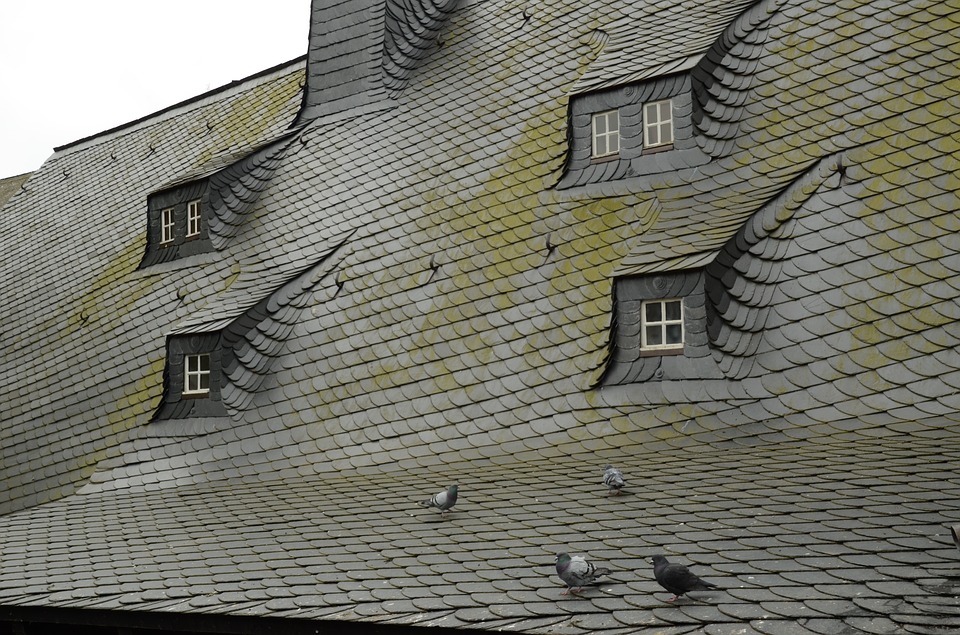Contents
– Characteristics of the slate roof
– What type of slate should I choose for my roof, and which format?
The roof is an important part of the house. It protects it against wind, rain and various external aggressions. Its role is fundamental to keep the interior healthy and ensure the durability of a building.
The materials used to cover the roof vary according to several criteria:
– Regional habits or local architectural constraints;
– The administrative authorizations (building permits);
– The constraints related to the construction;
– The slope of the roof;
– The climate of the region;
– The available budget.
There are a large number of possibilities for covering your roof: clay, concrete, metal, slate, wood, shingle, lauze, glass, polycarbonate, steel, zinc, PVC, fibre cement, or thatch.
Note: Slate roofing is suitable for sloping roofs, but is not suitable for rounded or flat roofs.
Characteristics of the slate roof
The slate roof, like the tile roof, is one of the most historically used materials, especially on pitched roofs.
Note: there are natural slate, extracted from quarries, and artificial slate, also called fibrocement slate, industrially manufactured from cellulose.
Slate: a regional tradition
In earlier days, each region was using local materials to cover the roofs.
For some, clay from the ground was used to make the tiles. It was crushed, mixed with water and fired. For others, it was the rock naturally present in the soil, shale. It is still used to make roofing slates or lauzes.
Good to know: How is slate obtained?
Slate is the result of the compression, over millions of years, of a multitude of clayey sedimentary layers. These generated layers thus allow the stone to split in the direction of sedimentation, thus forming the slates we know.
The thicknesses also vary:
– The most common rectangular slate is 3 to 4 mm thick;
– That in lauze can reach up to 2-3 cm.
What type of slate should I choose for my roof, and which format?
There are several sizes of slate. Their choice depends mainly on the slope and exposure to wind and rain. The lower the slope, the larger the format must be to ensure that the roof is watertight.
The most common rectangular slate format is 32 × 22 cm. However, there are smaller or larger slates available, depending on the slope of the roof:
– On steep roof slopes exposed to the weather, smaller slates are preferred (22 × 12, 22 × 16, 25 × 18, 27 × 18, 30 × 18, and 30 × 20 cm).
– On smaller slopes, larger slates can be used to ensure that the roof is watertight (35 × 22, 35 × 25, 40 × 22, 40 × 25, 46 × 30, 50 × 25, 60 × 30 cm). Slate can thus be laid on roofs with a slope of 20 % (minimum permissible), with slates of 46 × 30 or 60 × 30 cm.
Of course, the smaller the size, the lower the price of the slate, but more slate per m² will be needed. Therefore, the price per m² will be higher because there will be more labour involved. Conversely, the larger the format, the more expensive the slate, but less slate per m² will be needed.
The price can quickly rise depending on the complexity of the roof, the presence of windows, a hip, valleys or the need to install scaffolding.
Slate quality
There are also different qualities of slates on the market:
– First choice or first sort slates;
– 2nd grade or 2nd sort slates;
– 3rd grade slates, also known as rustic or classic.
Most slates today come from a small geographical area in Spain: Galicia. Each type of slate has its own physical characteristics (surface appearance, durability).
Oxidation of slates
Some slates also contain metallic minerals called pyrites, or iron pyrite. Some are stable and do not change over time, while others can evolve and cause widespread oxidation.
The classification of slates has reduced the importation of slates that could potentially oxidize on the roof. However, slate is still a natural product, like wood, and may from time to time have more or less marked defects such as:
– The presence of quartz wire;
– The presence of pyrites;
– The imprint of fossils.
Advantages and disadvantages of the slate roof
To help you make your choice, you will find in the table below the advantages and disadvantages of slate roofing:
| Advantages of the slate roof | Disadvantages of the slate roof |
– Service life (up to 100 years for historical slates). – Retains its colour well. – Ecological (natural material). – Allows roof ventilation. – Low roof weight (except for lauzes). | – Relatively difficult installation (professional installation is often necessary). – Heavy roofing, which therefore requires a good framing. – Cost sometimes more expensive compared to some more modern materials (e.g. steel tubs). |
Overall, this blog should appeal to people looking for information on home roofing materials. So the next time you talk to your contractor, you will be better informed about what they can offer you for your home roofing project.
Don’t forget to leave your comments in the section below if you would like to read something in particular.
Please note:
The second part of this post will soon be published to cover:
– How to install a slate roof?
– How to clean a slate roof?

… [Trackback]
[…] Read More here: building-constructionblog.com/archives/1348 […]
Pingback: What Are the Materials Used in Roofing | Building construction blog